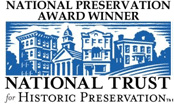FAQs
Frequently Asked Questions
Questions about CHRS
What is the Capitol Hill Restoration Society?
CHRS is the oldest and largest civic organization on Capitol Hill, representing about a thousand members. The Society was founded in 1955 to protect the historic fabric of the neighborhood.
Is the Capitol Hill Restoration Society an agency of the DC government?
No. It is a civic association that seeks to monitor changes to Capitol Hill housing stock and to maintain the quality of life of the residential historic area.
Does CHRS restore houses or recommend contractors who do?
No. The Society’s published Guidelines will assist those planning restoration and renovation projects in the historic district.
If I know of a business that I think is illegally operating in the residential district or of a party house that is disturbing the peace, should I contact CHRS?
CHRS can help you find out if a business is being operated illegally and can support complaints about nuisance properties. The Society can help you report violations and advise you on the most expeditious process. Such problems may take a long time to resolve, however. This said, it boils down to political pressure. It helps to vote in elections and to pay attention to what local representatives say and do.
When is the Capitol Hill House and Garden Tour?
The CHRS House Tour is always held on Mother’s Day. Tickets are sold at Eastern Market and at other businesses about a month before the tour. (View information about the House and Garden Tour.)
Questions about the Historic District
Why is Capitol Hill an Historic District?
Capitol Hill includes more than 8,000 historic buildings, many of which might have been destroyed or significantly altered without the designation. The Historic District Designation has served to preserve and protect the neighborhood’s physical integrity for future generations.
What are the boundaries of the Historic District of Capitol Hill?
Roughly, the Capitol Hill Historic District covers the area from the Capitol to14th Street on the east and from the South East Freeway to F Street, N.E. The Capitol Hill Restoration Society boundaries extend from the Capitol to the Anacostia River and from the Freeway to H Street, N.E. (View a map of the historic district)
What is the difference between Historic District regulations and zoning regulations?
Zoning regulations apply to things like lot occupancy, height and size. Historic district regulations are concerned with design. Two CHRS committees monitor these areas. They meet monthly to review cases and make recommendations to appropriate city offices—usually the Board of Zoning Adjustment and the Historic Preservation Review Board.
Why can’t I park in my front yard in the Historic District?
“Your” front yard is public space, governed by the District of Columbia, and its use is regulated. CHRS has a Guideline about these public spaces. Pedestrians shouldn’t have to maneuver around a car parked on the sidewalk. Blocks with iron fences, plants in front yards, and street parking are obviously more attractive than those interrupted by curb cuts and parked cars. (View Guidelines page)
Can I paint my house purple?
Neither the City nor CHRS controls what color you paint your house. We do remind you that Washington DC is a red brick city, not a wood frame “painted lady” city like San Francisco. CHRS has a Guideline to advise you. (View Guidelines page)
Do I need a permit to replace my windows with authentic wooden windows?
Yes. You need a permit to do any exterior work. You should consider repairing – not replacing – your wooden windows. In the Historic District you should not even consider using vinyl windows. CHRS has a Guideline to advise you. (View Guidelines page)


